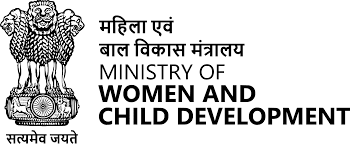Palna Scheme

- 25 Jul 2025
In News
Launched by the Ministry of Women and Child Development (MoWCD) under the Samarthya vertical of Umbrella Mission Shakti, the Palna Scheme aims to provide safe, accessible, and quality day care (crèche) facilities for children aged 6 months to 6 years across all States and Union Territories, effective from 1st April 2022.
Key Features:
- Objective: To support working mothers by providing crèche services ensuring:
- Safety and well-being of children
- Nutritional support
- Early childhood care and cognitive development
- Health check-ups, growth monitoring, and immunization
- Target Beneficiaries: All children aged 6 months to 6 years. Services are irrespective of mothers' employment status, covering both organized and unorganized sectors.
- Types of Crèches:
- Standalone Crèches
- Anganwadi-cum-Crèches (AWCCs)
Anganwadi-cum-Crèche (AWCC) Model
- Utilizes existing Anganwadi Centres, the world’s largest public childcare infrastructure, to provide full-day childcare services.
- Ensures last-mile delivery of services in a safe and secure environment.
- Supports women’s workforce participation by relieving unpaid childcare burden.
Timings & Flexibility
- Crèches to operate for 26 days/month and 7.5 hours/day, with timings adapted to local needs.
- States/UTs may adjust timings under Standard Operating Procedures based on community work patterns.
Funding Pattern
|
Category |
Centre:State Funding Ratio |
|
General States |
60:40 |
|
North Eastern & Special Category States |
90:10 |
|
UTs with Legislature |
60:40 |
|
UTs without Legislature |
100% Central Assistance |
Integrated Services Offered
- Day care and sleeping facilities
- Early stimulation for children below 3 years
- Pre-school education for 3–6 years
- Supplementary nutrition (locally sourced)
- Growth monitoring, health check-ups & immunization
Implementation Status (As of July 2025)
- Total Envisioned AWCCs (FY 2022–26): 17,000
- AWCCs Approved by MoWCD (as of July 2025): 14,599
- Implemented based on proposals from States/UTs with cost-sharing as per applicable funding norms.
Significance
- Addresses the rising need for formal childcare due to:
- Increasing nuclear families
- Greater women’s participation in the workforce
- Migration, urbanization, and limited informal support structures
- Aligns with SDG 8 (Decent Work and Economic Growth) by formalizing care work and supporting inclusive economic participation.
Poshan Pakhwada 2025 and Palna Scheme
- 10 Apr 2025
In News:
The Ministry of Women and Child Development (MoWCD) is spearheading a dual approach to address malnutrition and childcare challenges in India through two flagship initiatives—Poshan Pakhwada 2025 and the Palna Scheme under Mission Shakti.
Poshan Pakhwada 2025
- 7th edition observed from April 8–22, 2025, under Poshan Abhiyaan.
- Focuses on four key themes:
- Nutrition in the first 1,000 days (conception to age two).
- Promotion of the Poshan Tracker digital platform.
- Community-based Management of Acute Malnutrition (CMAM).
- Encouraging a healthy lifestyle to reduce childhood obesity.
- Poshan Tracker App (AI-enabled; launched in 2021):
- Registers all Anganwadi Centres (AWCs).
- Enables real-time monitoring of beneficiaries, meal distribution, and health data.
- Allows family self-registration via web.
- CMAM protocol (introduced in 2023): Empowers Anganwadi workers to detect and manage malnutrition at the grassroots.
- Special focus on tribal and remote areas, promoting awareness on breastfeeding, balanced diets, and early stimulation.
- Campaign supported by 18 partner ministries, with outreach via village camps, home visits, and awareness drives.
Palna Scheme under Mission Shakti
- Centrally sponsored scheme launched in 2022, succeeding the National Crèche Scheme.
- Operates under the Samarthya sub-scheme of Mission Shakti.
- Aims to provide quality crèche services for children aged 6 months to 6 years, especially for working mothers.
Key Features:
- Implemented by: Ministry of Women and Child Development (MoWCD).
- Funding Ratio:
- 60:40 (Centre: State),
- 90:10 for NE and special category states.
- Two crèche models:
- Standalone Crèches near homes/workplaces.
- Anganwadi-cum-Crèches (AWCCs) integrated within Anganwadi Centres.
- Facilities Provided:
- Nutritional meals, growth monitoring, immunization.
- Early stimulation and pre-school education.
- Support for continued breastfeeding.
- Crèche Capacity: Each unit supports up to 25 children.
- As of March 2025:
- 11,395 AWCCs approved across 34 States/UTs; 1,761 operational, catering to ~28,783 children.
- 1,284 Standalone Crèches operational with ~23,368 children enrolled.
- 17,000 new AWCCs planned for 2024–25.
- Legal Backing: Mandated in workplaces with 50+ employees under the Maternity Benefit Act (amended).
Significance for India
Together, Poshan Pakhwada and Palna contribute to achieving SDG 2 (Zero Hunger) and SDG 3 (Good Health and Well-being) by ensuring a lifecycle approach to nutrition and holistic early childhood care. They reflect the government's commitment to digital governance, gender empowerment, and inclusive development.
